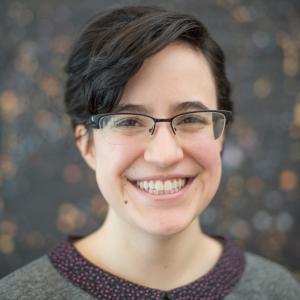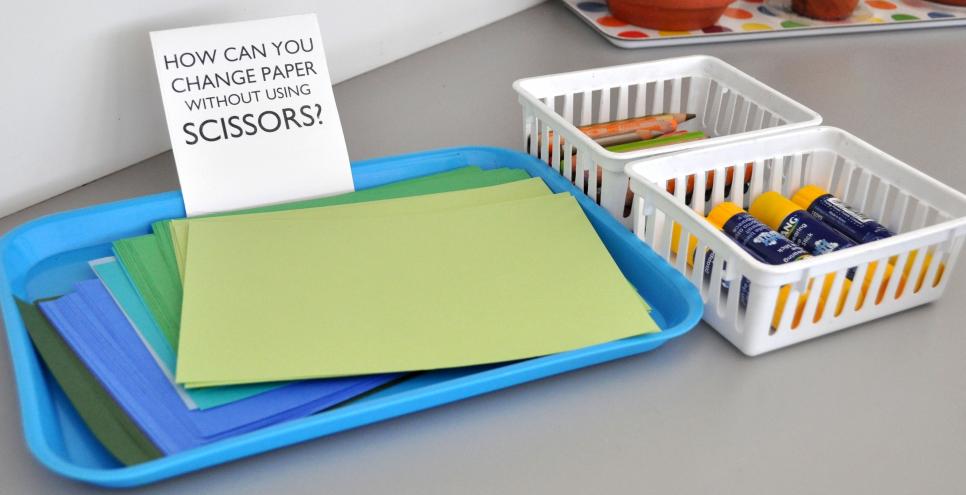Tear, Rip, Shred, Create!
At the museum, we often observe how our youngest visitors are interested in thoroughly exploring materials and their properties. They notice how paper sounds when it is crumpled, how it floats when tossed in the air, and how it feels as it is pulled apart. All of these observations about paper help us discover what makes it an interesting material to use for art making.
In this blog, we celebrate the sensory experience of working with paper. Below are the ways our team explored paper, through a series of creative actions:

We noticed that playing allowed us to experiment with new possibilities, sorting and tearing allowed us to closely observe our materials, and arranging and attaching gave us the chance to slow down and make choices about our art. Depending on how you are feeling or where you are in your artmaking process, you might find one of these actions more inspiring than another. Since each action is important in its own way, you do not have to explore all of them at once. They are potential starting places to begin your sensory experience with paper. Here are some stories our team shared about what they did with paper this week.
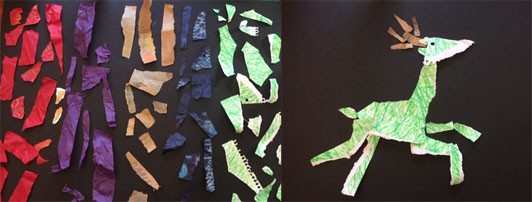
Meg had fun ripping, tearing, and shredding paper until she had lots of pieces in different shapes and sizes. She decided to sort her papers into color groups, leaving space between each shape. She noticed that one of the triangular green papers had a hole in the corner. Meg thought that this paper could turn into the head and eye of a creature. She played with the various papers, turning them this way and that, combining and re-combining until she made a four-legged animal. She didn’t glue the papers down but decided to keep experimenting, and sorted her papers again.
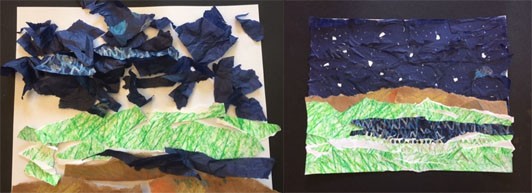
Then she noticed how her sorted papers formed stripes. These stripes reminded her of layers in a landscape, with some things close, and other things far away. She decided to loosely arrange some of the papers before gluing them down to create her landscape. The dark blue paper reminded her of a night sky and the water of a lake or bay. She glued down tiny scraps of white paper for stars and added even more distant ones by dotting the paper with a white crayon.
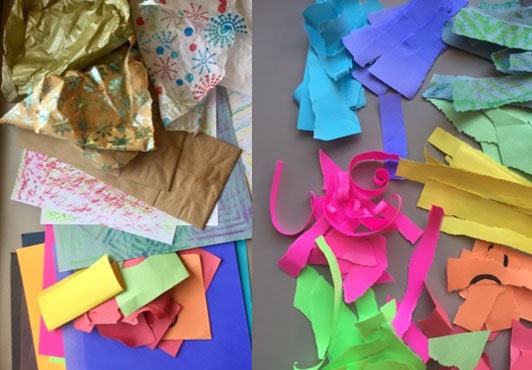
Megan gathered tissue paper, wrapping paper, copy paper, paper bags, and construction paper from around her home. She found it interesting how the different types of paper tended to tear in a certain way. She was especially drawn to the way the pink copy paper curled as it was torn.
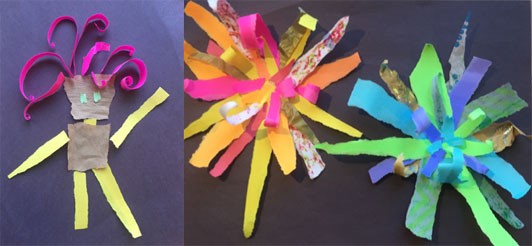
Megan played around with the pink paper curls, and really liked how they stood out when the paper was placed on its edge. She didn’t glue any of the paper down, but used the curls to create fun hair for a character. As Megan played around with the paper more, she started grouping the pieces by cool and warm colors. She then started gluing the cool pieces and warm pieces down around a center point, and created these bursts. They remind her of fireworks, or flowers.

Mackenzie began by selecting papers from her scrap pile. As she sorted through them, she thought that the watercolor scraps would be perfect to create a mountain, and wondered if the long pieces of magazine could be used to create trees. Using a glue stick, she attached a forest on the left side of her background paper, a mountain on the right, and the red and pink paper became a field. Mackenzie loved how abstract her collage landscape came out.
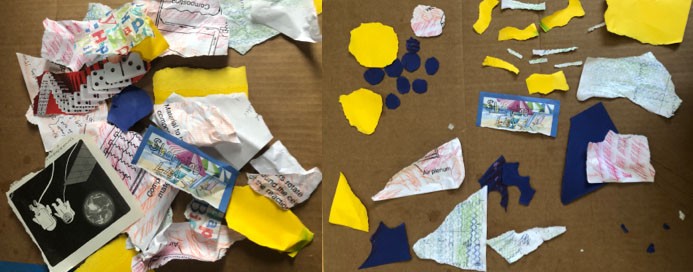
Hannah found some construction and tissue paper, magazines, and old homework that she did some rubbings on. She was interested in the noise different papers made when they were torn. Then she asked herself some experimental questions: Can I pull the paper apart? Can I tear it with my toes? What happens if I tear it reaaaalllllyyy slooowwwwly? How many different ways can I tear the paper? She then sorted the papers by shape: thin pieces, rectangle pieces, rounded pieces, etc.
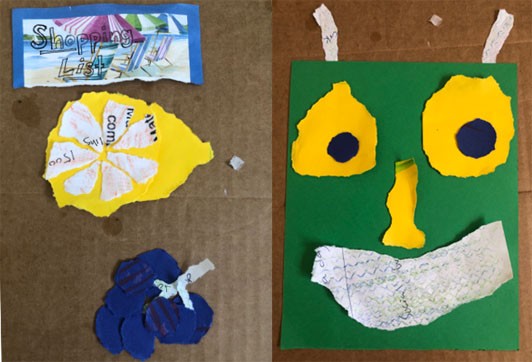
Sara found a variety of papers around her home including newspaper, tissue paper, brown paper bags, and notebook paper. As she sorted, Sara realized that she had papers with a wide range of colors and was motivated to find the most vibrant and textured ones across the color spectrum. After sorting them, she glued them down onto the notebook paper to create a layered rainbow that reminded her of a favorite installation in the Art Studio that explored hues.
For more inspirational resources, check out the book Collage Workshop for Kids, published by The Quarto Group, and written by Shannon Merenstein, owner, creative director, and lead educator at Hatch Art Studio. (We contributed studio project reflections and images inspired by Shannon’s rich collage explorations found within each chapter.)

